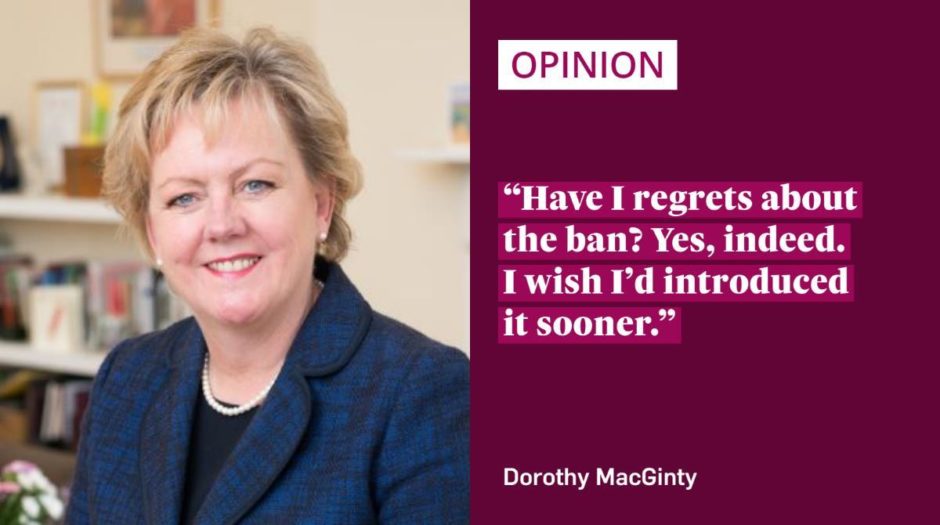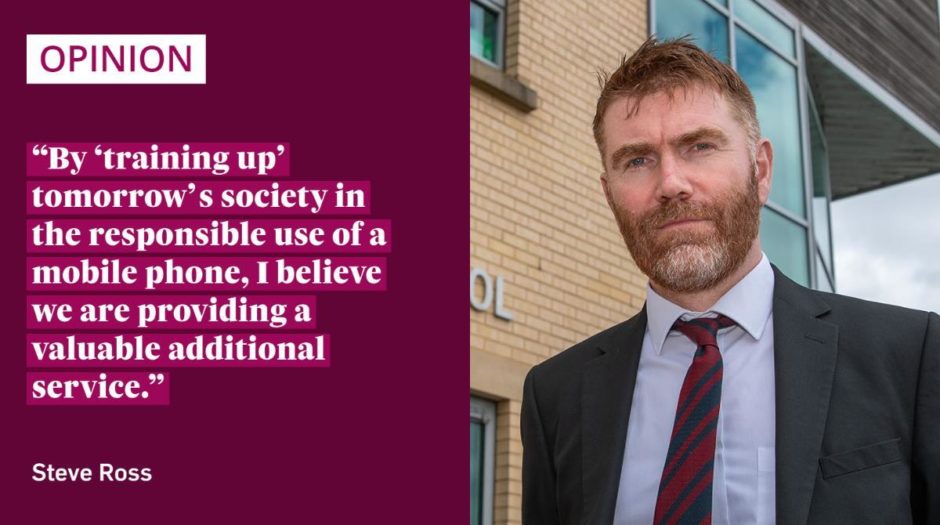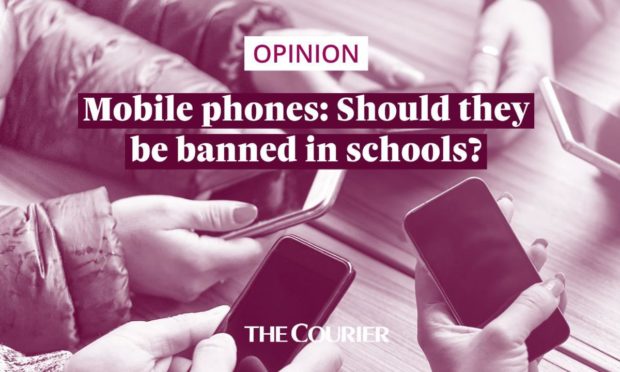Mobile phones in schools – should they be banned?
As a prohibition on the devices is considered for schools in England, we asked two school leaders with opposing views why they should or should not be permitted on school grounds.
Headmistress Dorothy MacGinty banned mobile phones from Kilgraston School three years ago. The independent school at Bridge of Earn, Perthshire, is for girls only at senior level.
At Beath High School, Cowdenbeath, Fife, rector Steve Ross has taken a pragmatic approach to the responsible use of the devices among pupils.
By the age of 14, one-in-three girls are unhappy with their personal appearance, says Dorothy MacGinty; a staggering one-in-six youngsters suffering from mental health problems, up from one-in-nine since 2017.
This year’s research by the Education Policy Institute and The Prince’s Trust, finds a direct correlation between heavy social media use and teenagers’ state of mind, girls in particular experiencing a sense of ‘depression’ and ‘hopelessness’.

As both a mother and a head teacher to nearly 300 pupils, I’m not sure I really need weighty think-tanks to deliver this verdict, as valid as findings may be.
First-hand, I’ve witnessed the glassy-eyed stare of teens on their screens, the momentary delay in response as they wrestle with the inner demons of an unwelcome comment, a picture deleted.
In my childhood, an unopened letter might elicit anxiety. However, it could be left on the kitchen table, addressed in evening’s calm and isolation, thought-process and family support close at hand.
Today’s instant gratification offers few hiding places for teenagers, nowhere to be alone, nor time for process. Social media is a demanding boss into whose ceaseless maw our youngsters are fed.
My sphere of influence is small but that which I am able to control, I will. By 2018, enough was enough. Mobiles were banned from Kilgraston’s daytime campus: no more Snapchat, TikTok, WhatsApp. Ergo, no more anonymous pressure.
Relief – by all stakeholders – was the predominant theme. The technical monster had been partially tamed with everyone benefitting. Eye-contact and conversation replaced bent heads and distraction, concentration spiked, even smiles returned.
Have I regrets about the ban? Yes, indeed. I wish I’d introduced it sooner.
Children don’t need further pressure, there’s enough already. Schools are for learning and fun with real-time friends, not furtive glances and inward turmoil.
Mobiles are an essential part of life’s tool-kit, but quickly they can become an unwelcome accessory, encompassing a gamut of challenges.
Just before the March lockdown last year, we decided on a new approach towards mobile phones in our learning areas, says Steve Ross.
This was due to concerns around interruptions to learning by young people checking and using their phones during lessons.

Our positive relationships committee, a group made up of school staff, parents and pupils, came up with a mature and pragmatic solution. A simple graphic is displayed by the teacher at the front of every learning area – either phones are allowed to be used in class during that lesson or not. If not, they are on silent and out of sight.
I believe there are many positives to having access to phones during a lesson – I regularly see youngsters taking photos of notes, recording experiments, checking their Microsoft Teams folders and so on.
However, the flip side of this is that a phone used inappropriately during a lesson has the potential to very quickly interrupt and disrupt the flow of learning.
At Beath, a key part of our school vision is preparing our young people for the future – whether that is college, university, apprenticeship or work. By ‘training up’ tomorrow’s society in the responsible use of a mobile phone, I believe we are providing a valuable additional service to our youngsters.
Due to the pandemic, our rollout of this new mobile phone approach was put on hold – we are now looking to implement after the forthcoming October holidays.
Like all our improvements over the last few years, we will make sure all young people, parents and carers are aware of what we are doing, and why, before the new approach starts.
Pupils and parents being consulted on this approach is very important to me – only by working together can we continue to improve our school community.










